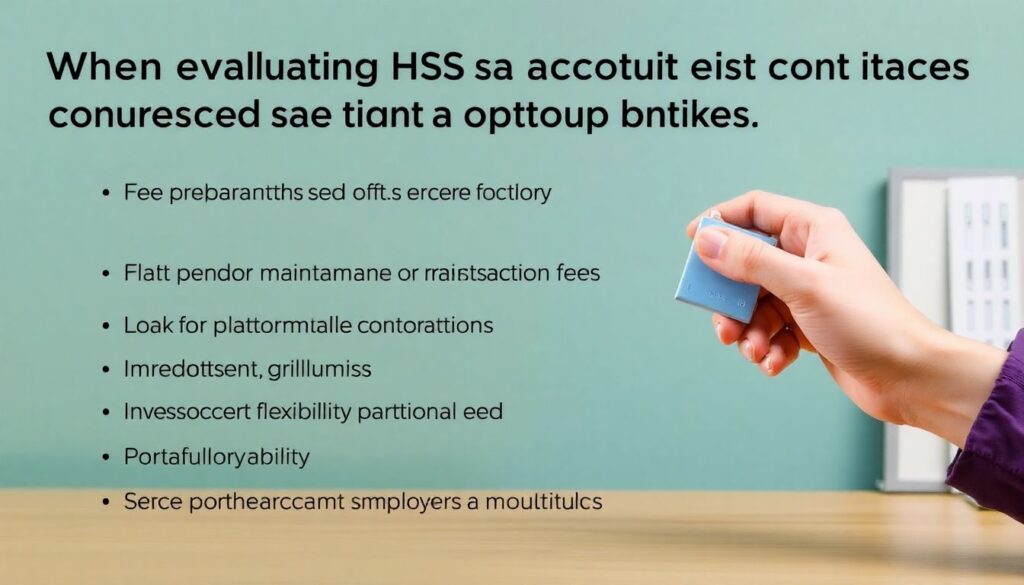Understanding HSA Eligibility and Contribution Rules: A 2025 Perspective

As Health Savings Accounts (HSAs) continue to gain traction as a tax-advantaged vehicle for medical savings, understanding the nuances of HSA eligibility requirements and contribution limits becomes essential. With the healthcare landscape evolving, both employers and individual taxpayers must adapt to emerging trends and regulatory changes. This article provides a comprehensive breakdown of HSA eligibility and contribution rules, compares strategies, and offers forward-looking recommendations for 2025.
How to Qualify for an HSA: Core Requirements
To open and contribute to an HSA, individuals must meet specific HSA eligibility requirements. Primarily, one must be enrolled in a High-Deductible Health Plan (HDHP) that meets the IRS-defined minimum deductible and maximum out-of-pocket limits. For 2025, these thresholds have been marginally adjusted for inflation.
Key conditions include:
– Enrollment in an HSA-qualified HDHP.
– No other disqualifying health coverage (e.g., general-purpose FSA or Medicare).
– Not being claimed as a dependent on someone else’s tax return.
These criteria may seem straightforward, but there are edge cases—such as limited-purpose FSAs and telemedicine plans—that can impact eligibility. Understanding how to qualify for an HSA in these gray zones requires a detailed policy review.
Comparing Approaches to HSA Account Setup
There are generally two methods for setting up an HSA: employer-sponsored accounts and direct-to-consumer (D2C) platforms. Each approach offers distinct advantages and limitations.
– Employer-Sponsored HSAs are integrated with payroll systems, simplifying contribution management and often including employer contributions.
– D2C HSAs offer greater control over investment choices, portability, and often lower administrative fees.
While employer plans offer convenience, they may restrict investment options or charge hidden fees. Conversely, D2C platforms require more proactive management but can deliver better long-term returns through diversified investment portfolios.
HSA Contribution Limits 2023 and Beyond
For 2023, the IRS set HSA contribution limits at $3,850 for individuals and $7,750 for families, with an additional $1,000 catch-up contribution allowed for those aged 55 and older. These HSA contribution limits 2023 serve as a critical benchmark for financial planning, but with inflationary adjustments, 2025 limits are expected to rise modestly.
Proactive participants should:
– Maximize contributions early in the year to capitalize on tax-free growth.
– Align contributions with expected medical expenses to avoid overfunding.
– Monitor IRS updates for annual limit changes.
Tax Advantages and Strategic Use Cases
The HSA tax benefits are among the most compelling in the financial landscape. Contributions are tax-deductible, earnings grow tax-deferred, and withdrawals are tax-free when used for qualified medical expenses. This triple tax advantage makes HSAs a hybrid between a savings account and a retirement vehicle.
Innovative strategies include:
– Using HSAs as a stealth retirement account by paying out-of-pocket for current medical expenses and saving receipts for tax-free withdrawals in retirement.
– Investing HSA funds in low-cost index funds to maximize compounding over decades.
– Leveraging HSAs for estate planning, as assets can be passed to a spouse tax-free.
Pros and Cons of HSA Technologies
Modern HSA platforms vary widely in terms of user experience, integration, and investment functionality. Emerging fintech solutions are disrupting the traditional banking model by offering intuitive mobile interfaces, automated investing, and real-time expense tracking.
Advantages:
– Streamlined account management via mobile apps.
– Integration with budgeting and healthcare apps.
– Access to fractional investing and robo-advisors.
Disadvantages:
– Limited human customer support.
– Varying fee structures not always transparent.
– Inconsistent investment options across platforms.
Recommendations for Choosing the Right HSA

When evaluating HSA account setup options, consider the following factors:
– Fee transparency: Avoid custodians that charge monthly maintenance or transaction fees.
– Investment flexibility: Look for platforms offering a broad range of ETFs and mutual funds.
– Portability: Ensure the account remains accessible if you change employers or retire.
For high-income earners, maximizing HSA contributions alongside 401(k) and Roth IRA accounts can optimize tax efficiency. For gig workers or freelancers, D2C platforms offer unmatched flexibility and control.
Emerging Trends in 2025
Several macro trends are reshaping the HSA landscape:
– Integration with AI-based health planning tools: Platforms now predict future medical costs and recommend contribution levels accordingly.
– Expanded employer matching programs: In response to competitive labor markets, more companies are offering HSA matching contributions as part of total compensation.
– Policy discussions around Medicare eligibility: With rising healthcare costs, policymakers are exploring ways to extend HSA eligibility to those on Medicare Part A only.
These developments suggest that HSAs will continue to evolve from simple savings vehicles into comprehensive health-financial ecosystems.
Conclusion

Understanding HSA eligibility requirements and contribution rules is more than a compliance exercise—it’s a strategic imperative. With proper planning, individuals can unlock the full spectrum of HSA tax benefits and use these accounts as long-term financial tools. Whether through employer-sponsored programs or direct platforms, the key lies in aligning your approach with your health profile, financial goals, and risk tolerance.
As we move into 2025, adaptability and informed decision-making will be critical. By staying abreast of HSA contribution limits 2023 and beyond, leveraging modern technologies, and understanding how to qualify for an HSA under nuanced conditions, consumers can maximize value and resiliency in their health and wealth planning.

